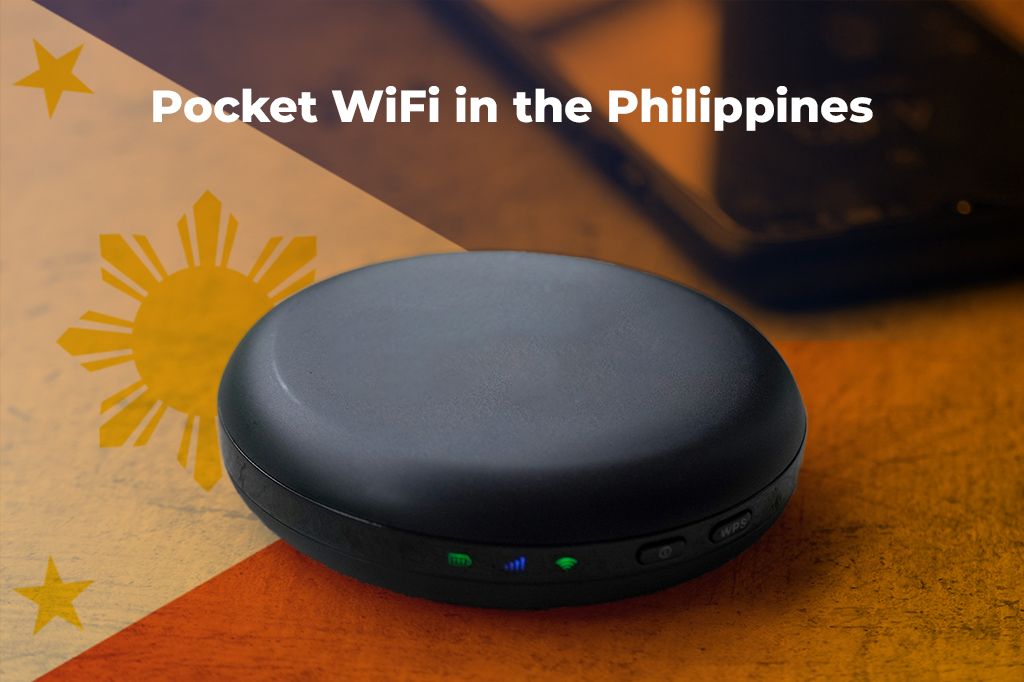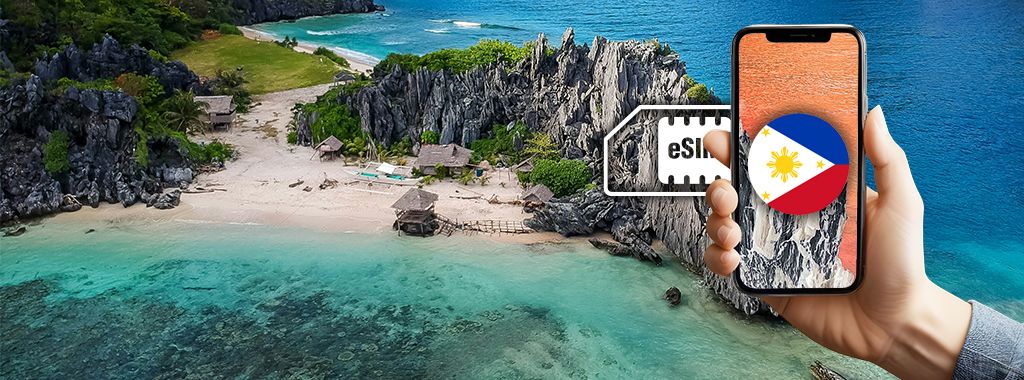Are you planning a trip to the beautiful islands of the Philippines? Getting a pocket wifi in the Philippines is a common choice for many travelers, but it’s not always as simple as it sounds. The internet signal can be strong in the big cities but weak on a remote island.
This guide will walk you through everything you need to know about pocket WiFi. We’ll help you understand your options so you can stay connected wherever your adventure takes you.

Picture by Asif Asharaf on Unsplash
What is a Pocket WiFi? (And Why It’s Popular in the PH)
Let’s break down what a pocket WiFi is. Think of it as your own personal, portable internet hotspot. It’s a small, battery-powered router that creates a WiFi network, allowing you to connect multiple devices like your phone, tablet, and laptop all at once. This little gadget is extremely popular in the Philippines for several good reasons. Here’s why people love it:
-
Traveling with Family or Friends? One pocket WiFi can connect everyone, so you don’t need to buy separate SIM cards for each person.
-
Working Remotely or Gaming on the Go? You get a stronger and more stable signal than most public WiFi or phone hotspots.
-
Exploring Island Destinations? In places like Palawan or Siargao, hotel internet is often slow (if it works at all). Pocket WiFi keeps you connected.
Here’s a feature that many people don’t know about. Select models of pocket WiFi sold locally can automatically switch between the Philippines’ two main networks, Smart and Globe. If one network is weak, the device finds the other, giving you the best possible signal. This is a powerful feature that many international eSIMs do not offer.

Picture by Piotr Cichosz on Unsplash
Local Pocket WiFi Providers: Hidden Gems & Ripoffs
When you look for a pocket Wi-Fi Philippines, two brand names will appear everywhere:
• Globe MyFi: Globe has excellent and reliable coverage across Luzon, the main island where Manila is located. If your trip is mostly in this area, Globe MyFi is a strong option.
• Smart Bro: Smart has invested heavily in its network across the central and southern islands. It consistently offers better and more reliable coverage in the Visayas (where Cebu and Boracay are) and Mindanao.
Also, you’ll see rental counters for these devices right at the airport, but you need to be careful. Nobody tells you about the potential downsides of airport rentals, such as complicated warranty claims and difficult device swaps if something goes wrong.
On the other hand, grab-and-go kiosks in shopping malls are easier to deal with if you need support. For a potentially smoother experience, you can look into specialist rental companies. These services have better customer service and more flexible options. Some popular ones include:
-
Travel Recommends Philippines: Travel Recommends is a well-known brand across Asia that specializes in providing travel essentials, with pocket WiFi being one of their flagship products. Their main selling point is convenience and reliability.
-
BigSkyNation: Another strong contender in the specialist rental market, BigSkyNation has built a reputation for reliable service and competitive data plans. They often appeal to travelers who are looking for unlimited data packages, which is perfect for digital nomads, business travelers, or families who will be using multiple devices heavily.
-
Klook PH Partnerships: Klook is a massive online travel agency where you book tours, transfers, and attraction tickets. It’s not a direct WiFi provider, but it partners with local suppliers (sometimes even companies like BigSkyNation) to offer pocket WiFi rentals on its platform. The biggest advantage here is the power of the bundle deal and the one-stop-shop experience.

Battery Life & Online Safety
Your pocket WiFi won’t do you any good if it’s dead by lunchtime. When you’re hopping between islands or lounging far from civilization, a weak battery becomes a real problem. Some devices, like the Huawei E5785, have been tested to last noticeably longer than others, like the Alcatel LinkZone. That extra juice can be the difference between navigating home and being stranded without a signal. The easiest solution is to bring a high-capacity power bank. Even better, a solar charger if you’re going completely off-grid. Think of it as travel insurance for your internet connection.
But power isn’t everything: you also need to stay safe. These devices often come with weak default passwords. So, change yours. Make it strong. And if you’re using a public WiFi, a VPN (Virtual Private Network) is essential. It keeps your data private, especially in high-traffic places like airports or busy cities.
In short: keep your hotspot charged and your connection locked down. That’s how you travel smart.
The Alternative that Beats Pocket WiFi: eSIMs
While pocket WiFi is a popular choice for staying connected on the go, there’s a digital alternative that’s faster, lighter, and simply more convenient: the eSIM. An eSIM is a digital, embedded SIM card that is already part of your phone’s hardware. You don’t need to insert a physical card; you simply activate it by scanning a QR code. For many travelers, it’s the obvious winner. Here’s why:
-
Setup Takes Seconds: Imagine landing in Rome after a long flight. Instead of searching for a SIM card store, you just connect to the airport’s WiFi for a moment, scan the eSIM QR code you received in your email, and you are online in seconds. The convenience is unmatched.
-
No Extra Hardware: Traveling light is always better. With an eSIM, there is no extra device to charge, no extra cables to pack, and most importantly, one less valuable item to potentially lose or have stolen.
-
Competitive Prices: eSIMs are often very affordable. Providers like Yoho Mobile offer data plans for Europe, which are often cheaper than renting a pocket WiFi.
-
Borderless: Many eSIMs cover entire regions, so you can travel from Thailand to Vietnam to the Philippines without changing anything.
-
Keep Your Number: Most eSIM-capable phones let you use both your regular SIM and the eSIM at the same time. That means you can use local data and still receive calls or texts on your main number.
If you’re curious but not ready to commit, there’s a perfect way to see if an eSIM is right for you. Yoho Mobile offers a free eSIM trial. There is no credit card required, and absolutely no strings attached, making it a truly risk-free way to test the technology. If you want to get your eSIM plan afterwards, use the code YOHO12 at checkout for a 12% discount!

Picture by Cris Tagupa on Unsplash
Traveler FAQs
Can I use a Pocket WiFi on a banca (local boat)?
Yes, you can, but manage your expectations. A banca is a small local boat, and your pocket WiFi will only work if the boat is relatively close to the shore and within range of a cell tower. Once you get further out to sea, the signal will likely drop.
How long does airport pickup really take at NAIA?
At Manila’s Ninoy Aquino International Airport (NAIA), picking up a pre-booked pocket WiFi can be quick, or it can be slow. It depends on the time of day and how many flights have landed at once. Budget anywhere from 15 minutes to over an hour to be safe.
Can you use Pocket WiFi while hiking Mt. Pulag?
Technically, you can carry it, but you will almost certainly have no signal. Mt. Pulag is a remote, high-altitude mountain. Cell service from any provider is extremely limited to non-existent in such areas. Do not count on being connected while hiking there.
Which eSIM is best for island-hopping from Cebu to Bohol?
For island hopping between nearby islands like Cebu and Bohol, a local eSIM from Globe or an international provider like Yoho Mobile is your best bet. Before buying, it’s wise to ask locals or your hotel staff in Cebu which network they feel is more reliable in the specific areas you plan to visit, as coverage can vary even between these two popular islands.
Can I get a refund if the signal is weak?
This is highly unlikely. The terms and conditions for most pocket WiFi rentals and eSIM plans state that the provider is not responsible for poor signal coverage, as it depends on your location. It is almost always non-refundable, so read the fine print before you pay.
